Europe's Rosetta probe observes Comet LINEAR
May
30: ESA's comet-chaser Rosetta, whose 10-year journey to its final
target Comet 67P/Churyumov-Gerasimenko started on March 2nd, is well on its way.
The first phase of commissioning is close to completion and Rosetta has successfully
performed its first scientific activity — observation of Comet C/2002 T7 (LINEAR).
 FULL STORY FULL STORY
 |  |

|
 |
Double stars emerge as heavyweight champions
May 29: About 20,000 light-years from Earth, two massive stars grapple with each other
like sumo wrestlers locked in combat. Both giants, each weighing in at around
80 times the mass of our Sun, are the heaviest stars ever. They orbit each
other every 3.7 days, nearly touching as they spin on the celestial stage.
 FULL STORY FULL STORY
 |  |

|
 |
Moon tells of unexpected Earth climate changes
May
28: Scientists who monitor Earth's reflectance by measuring the
Moon's 'earthshine' have observed unexpectedly large climate fluctuations during
the past two decades.
 FULL STORY FULL STORY
 |  |

|
 |
Raw ingredients for life found around young stars
May
27: NASA has announced new findings from the Spitzer Space Telescope,
including the discovery of significant amounts of icy organic materials sprinkled
throughout several "planetary construction zones," or dusty planet-forming discs,
which circle infant stars.
 FULL STORY FULL STORY
 |  |

|
 |
Spacecraft near and far are watching Saturn
May
26: As Saturn grows closer through the eyes of the Cassini spacecraft,
which is hurtling toward a rendezvous with the ringed world on June 30th, both
Cassini and the Earth-orbiting Hubble Space Telescope snapped spectacular pictures
of the planet and its magnificent rings.
 FULL STORY FULL STORY
 |  |
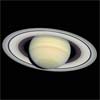
|
 |
Radio astronomy gets connected
May
25: On May 25th, work started on the construction of an optical
fibre network which will connect five radio telescopes to the giant 76-metre Lovell
Telescope at Jodrell Bank Observatory in rural Cheshire, allowing it to operate
with vastly improved sensitivity.
 FULL STORY FULL STORY
 |  |
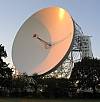 |
 |
Cosmic powerhouses dwell in humble homes
May
25: Quasars are the most brilliant of cosmic fireworks, shining
out across billions of light-years of space. However, a recent study done at Gemini
Observatory shows that they appear to blaze forth from humdrum galaxies in the
early universe, and surprisingly, not from the giant or disrupted ones astronomers
expected.
 FULL STORY FULL STORY
 |  |

|
 |
Close-up view of comet
May
25: This image of Comet C/2001 Q4 (NEAT) was taken at the Kitt
Peak National Observatory earlier this month. The comet will remain visible for
several weeks with binoculars and small telescopes just after sunset, high in
the western sky.
 FULL STORY FULL STORY
 |  |

|
 |
Cassini sees smaller moons of Saturn
May
24: Two of Saturn's moons — Prometheus and Pandora —
are seen here shepherding the planet's narrow F-ring in this latest image from
the approaching Cassini spacecraft.
 FULL STORY FULL STORY
 |  |
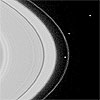
|
 |
Starburst eye of a galaxy produces a cosmic shower
May
23: Combining images from orbiting and ground-based telescopes,
an international team of astronomers has located the eye of a cosmic hurricane:
the source of the one million mile-per-hour 'winds' that shower intergalactic
space from the galaxy M82.
 FULL STORY FULL STORY
 |  |

|
 |
Theory proposes new view of Sun and Earth's creation
May
22: Like most creation stories, this one is dramatic: we began,
not as a mere glimmer buried in an obscure cloud, but instead amidst the glare
and turmoil of restless giants.
 FULL STORY FULL STORY
 |  |

|
 |
Asteroids reveal their age in colour, astronomers say
May
22: In an article published in the journal Nature, a team led
by Robert Jedicke of the University of Hawaii's Institute for Astronomy provides
convincing evidence that asteroids change colour as they age.
 FULL STORY FULL STORY
 |  |

|
 |
Cassini peers closer at Titan
May
21: The Cassini orbiter continues its observations of Saturn's
mysterious moon Titan, stealing another early peek at the haze-enshrouded surface.
Cassini's view of Titan now surpasses Earth-based observations in its ability
to show detail.
 FULL STORY FULL STORY
 |  |
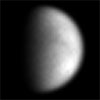
|
 |
Asteroid with the smallest orbit discovered
May
21: The ongoing search for near-Earth asteroids at Lowell Observatory
has yielded another interesting object. Designated 2004 JG6, this asteroid is
located between Earth and Venus and goes around the Sun in just six months, making
it the asteroid with the shortest known orbital period.
 FULL STORY FULL STORY
 |  |

|
 |
Chandra opens new dark energy investigation
May
18: Astronomers have detected and probed dark energy by applying
a powerful new method that uses images of galaxy clusters made by NASA's Chandra
X-ray Observatory. The results trace the transition of the expansion of the universe
from a decelerating to an accelerating phase several billion years ago.
 FULL STORY FULL STORY
 |  |

|
 |
Theory clues may be visible in Big Bang aftermath
May
14: Scientists studying the Big Bang say that it is possible that
string theory may one day be tested experimentally via measurements of the Big
Bang's afterglow. The string theory attempts to unify the physics of gravity and
the atom.
 FULL STORY FULL STORY
 |  |
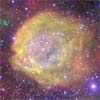
|
 |
'Smoking gun' evidence of giant meteor collision
May
14: Evidence is mounting that 251 million years ago, long before
the dinosaurs dominated the Earth, a meteor the size of Mount Everest smashed
into what is now northern Australia, heaving rock halfway around the globe, triggering
mass volcanic eruptions, and wiping out all but about ten percent of the species
on the planet.
 FULL STORY FULL STORY
 |  |

|
 |
Latest Cassini image shows bands of clouds and lace
May
14: As Cassini nears its rendezvous with Saturn, new detail in
the banded clouds of the planet's atmosphere are becoming visible. Cassini began
the journey to the ringed world of Saturn nearly seven years ago and is now less
than two months away from orbit insertion on June 30.
 FULL STORY FULL STORY
 |  |
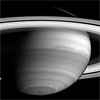
|
 |
Hubble views enigmatic Red Rectangle
May
11: Astronomers may not have observed the fabled "Stairway to
Heaven", but they have photographed something almost as intriguing: ladder-like
structures surrounding a dying star within the nebula HD 44179.
 FULL STORY
FULL STORY
 |  |

|
 |
XMM-Newton detects X-ray 'solar cycle' in distant star
May
10: For years, astronomers have wondered whether stars similar
to the Sun go through periodic cycles of enhanced X-ray activity, like those often
causing troubles to telephone and power lines here on Earth. Europe's X-ray observatory
XMM-Newton has now revealed for the first time a cyclic behaviour in the X-ray
radiation emitted by a star similar to the Sun.
 FULL STORY FULL STORY
 |  |

|
 |
Closer to the monster
May
8: Fulfilling an old dream of astronomers, observations with
the Very Large Telescope in Chile have now made it possible to obtain a clear
picture of the immediate surroundings of the black hole at the centre of an active
galaxy.
 FULL STORY FULL STORY
 |  |

|
 |
Two extremely hot exoplanets caught in transit
May
7: A European team of astronomers are announcing the discovery
and study of two new extra-solar planets. The observations were performed in March
at the Paranal Observatory in Chile.
 FULL STORY FULL STORY
 |  |
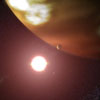
|
 |
Cassini spies on Titan
May
6: The veils of Saturn's most mysterious moon have begun to lift
in Cassini's eagerly awaited first glimpse of the surface of Titan, a world where
scientists believe organic matter rains from hazy skies and seas of liquid hydrocarbons
dot a frigid surface.
 FULL STORY FULL STORY
 |  |
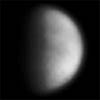
|
 |
Illuminating the 'dark ages' of the universe
May
4: Astronomers who want to study the cosmic dark ages face a
fundamental problem. How do you observe what existed before the first stars formed
to light it up? Theorists have found a solution.
 FULL STORY FULL STORY
 |  |

|
 |
Galaxy family has close interaction in cosmic tango
May
3: Stars like our Sun are members of galaxies, and most galaxies
are themselves members of clusters of galaxies. In these, they move around among
each other in a mostly slow and graceful ballet. But every now and then, two or
more of the members may get too close for comfort—the movements become hectic,
sometimes indeed dramatic, as when galaxies end up colliding.
 FULL STORY FULL STORY
 |  |

|
 |
Scientists announce cosmic ray theory breakthrough
May
1: University of California scientists working at Los Alamos National
Laboratory have proposed a new theory to explain the movement of vast energy fields
in giant radio galaxies (GRGs). The theory could be the basis for a whole new
understanding of the ways in which cosmic rays—and their signature radio
waves—propagate and travel through intergalactic space.
 FULL STORY FULL STORY
 |  |

|
 |



